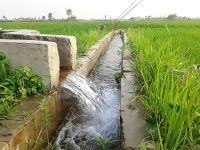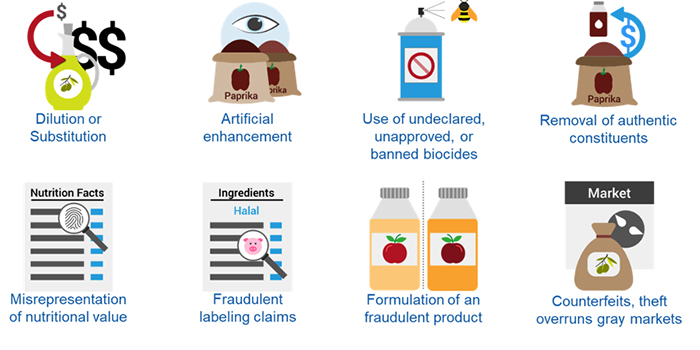How much can pest issues cost? The truth is, it changes based on the pest, the size of the population and the prevalence throughout your food processing facility and products. If you want to protect your bottom line, you need to know which pests are the biggest threat and take steps to prevent them. Let’s focus on one major threat to food processing facilities: Stored product insects.
Believed by some pest control providers to be the costliest pests for food manufacturing and processing businesses, stored product insects can put a huge dent in your profits. What’s worse, these pests can be tough to discover by an untrained eye, and they’re incredibly difficult to control without the help of a pest management professional.
According to the USDA and the University of Wisconsin, “stored product pests can damage, contaminate, or consume as much as 10% of the total food produced in the U.S. alone, while in developing countries that rate has been estimated at 50% or more.”
That’s an astronomical figure for such small insects! Can you imagine the impact on your bottom line if 10% of your product was ruined?
For any business in need of an updated prevention plan, the first step is to review the current integrated pest management (IPM) program to ensure a proactive approach has been implemented to monitor for, and react quickly to, any pest issues around the facility. There’s no one-size-fits-all strategy for an IPM program; each program should be customized to meet the needs of the individual business. Different geography, construction and food products being produced can all create different pest pressures.
According to another study conducted by CEBR on the impact of pests on the global food supply, disruptions caused by pest infestations resulted in $9.6 billion in operating costs in the countries surveyed and 84% of U.S. businesses reported a net impact on revenue due to pest infestation across a five-year period. Diving deeper, 28% of food manufacturers and processors reported pest-related costs associated with contamination of raw materials leading to replacement costs.
In other words, having stored product insects around is expensive. If there were ever any doubts about the value of a proactive IPM program, these statistics prove it. So, let’s take a closer look at how you can work to protect your business against stored product insect—some of the most likely and costly invaders.
Types of Stored Product Insects
The term stored product insect covers a range of insect species that can be broken up into three main subcategories: External feeders, internal developers and secondary feeders. Each category has its own distinct characteristics, which are important to know for detection and proper identification.
External Feeders
This group develops on the outside of products, including damaged grains and processed foods. As they feed, they damage product and leave behind frass (insect droppings) as they make their way through.
Some of the most common external feeders include Indian meal moths and flour beetles.
Adult Indian meal moths are roughly 9 mm long and have a wingspan of 14–20 mm. The front wings on the adults are bicolored, with two main tones: Reddish-brown at the wing tip and silver-grey at the base. If you don’t see the pest itself, you may notice a messy silk webbing spun by the larvae.
Red and confused flour beetles, two of the most common beetle species, are 3–4 mm in length and also have a reddish-brown color. They’re rectangular-shaped beetles and can often be found in grain bins infested with internal developers. This is because flour beetles like to feed on the kernels other stored product insects, like borers, have already broken up. They can also be found in processing lines and finished products.
Internal Feeders
Internal feeders lay eggs inside or outside of kernels of grain but develop entirely inside those kernels. As they develop, they hollow out the kernel, then the adults can go on to damage other kernels.
Some of the most commonly encountered internal developers are lesser grain borers and rice, maize and granary weevils. Weevils measure about 5 mm in length and are usually brown in color with a distinct elongated “snout.” Lesser grain borers, the most common internal feeder across the United States infesting wheat, are a bit smaller and don’t have the snout that weevils do. Both weevils and lesser grain borers have pitted patterns on their bodies, and all can fly except the granary weevil. As the larvae and pupae develop inside grain kernels, damage becomes especially evident when the adult chews out and leaves a distinctive perfectly round hole.
Secondary Feeders
This group typically eats from the outside in and feeds on the mold and fungus that can grow on out-of-condition grain and damp product.
Two of the most common secondary feeders are the foreign grain beetle and sawtoothed grain beetle. Foreign grain beetles love mold, and resemble flour beetles in size and color. To tell them apart, look for two “bumps” on the top corners of the thorax. Eliminating molds and damp conditions that facilitate mold growth is generally enough to help prevent infestations from secondary feeders.
Sawtoothed grain beetles can feed on many types of products and while they can’t physically penetrate packaging, the adults will find holes less than 1 mm in diameter, lay eggs, and the larvae will squeeze through the tiny openings to get to the product. They prefer processed food products like bran, chocolate, oatmeal and even pet foods, but will feed on whatever they can access. Sawtoothed grain beetles are smaller than flour beetles (3 mm) and have distinctive “teeth” on the margins of the thorax.
Prevention, Monitoring & Detection, and Removal
The best way to protect a facility from stored product insects is to employ numerous different tactics. Specifically, it’s important to proactively mitigate pest attractants, monitor for activity in key areas around the facility, and establish thresholds and action plans when pests are detected.
First and foremost, educate all employees about the pests most common around your facility and what to do should they spot one. Your pest sighting log is a great tool, but only if people use it! Have a clear escalation plan for any pest issues spotted. In addition, create a sanitation schedule to ensure all areas and equipment are cleaned to remove food and moisture buildup attractive to pests on a regular basis. While you can’t possibly eliminate all food (you are of course storing and processing food!), the aim is to minimize the amount and the access these insects have to that food source.
Next, make sure all incoming shipments and packages are inspected closely in a sealed off unloading area away from other products. Make sure employees know to check for signs of damage, especially holes caused by boring pests. Taking the time to inspect anything entering your facility in this way will give you a chance to spot pests before they have the chance to spread to your other products. Use the first-in, first-out (FIFO) approach for all goods to ensure older product doesn’t sit. The longer product sits, the more chance it can be infested and it may start deteriorating, and this is especially attractive to stored product insects.
For ongoing monitoring, talk to a pest management professional about deploying pheromone traps strategically around your facility. Pheromone traps are the best tool to monitor for stored product insects, as they will give you an idea of which pests are present, in what numbers, where they are, and they can help you track trends in pest activity over time. If any stored product insects are ever spotted, contact your pest management professional immediately. If there’s a chance of having stored product insects on your product, you absolutely should have pheromone trap monitoring in place.
The Total Cost of Stored Product Pest Problems
The impact of pest issues caused by stored product insects isn’t limited to the cost of paused operations and replacing contaminated product. These pests are tough to spot, and could be passed along to partners further down the supply chain. Naturally this could hurt the trust between supply chain partners, which is never a good thing!
If your facility gets a reputation of having problems with stored product insects, it’s going to hurt your brand—and that’s going to be another knock to your bottom line. Stored product insects can spread quickly between products placed closely together. So, if pests are mistakenly shipped to a partner’s facility or a store and then on to a customer, now THEY are going to have to deal with stored product insects, too. Being proactive is the best approach, and careful documentation can help you and your supply chain partners track pest issues to the source so they can be resolved quickly and minimize the impact on profits.
It becomes easy to see stored product insects can cause both short-term and long-term effects on the profitability of a business. Don’t let that be your facility and your reputation! Be proactive and partner with a pest management provider to help ensure your facility operations run smoothly and your customers stay happy.


























